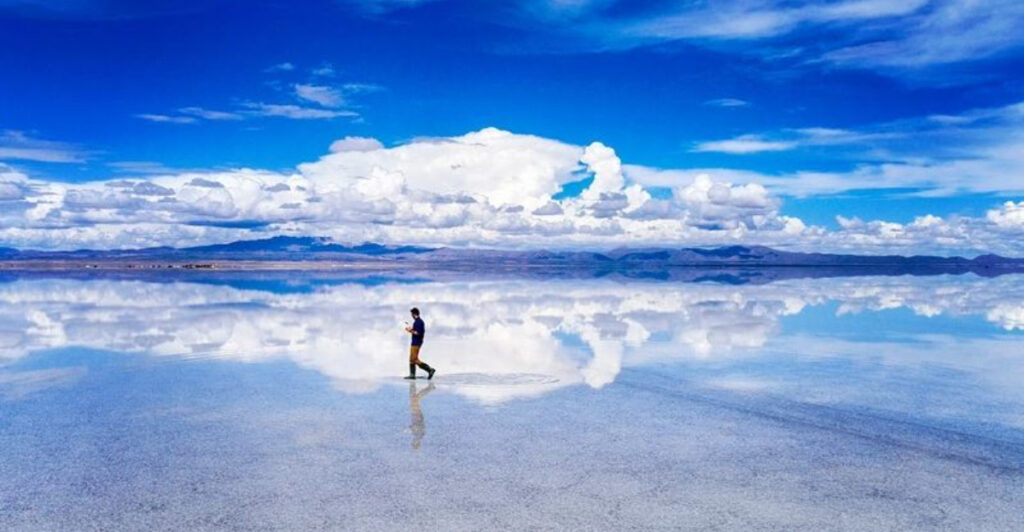Our planet is filled with jaw-dropping sights that remind us just how incredible Earth truly is. From ancient structures carved into mountainsides to glittering cities perched on cliffs, these remarkable places showcase the best of human creativity and nature’s power. Pack your bags and prepare to be amazed as we explore these unforgettable destinations that might just change how you see the world.
1. Petra, Jordan: The Rose-Red City
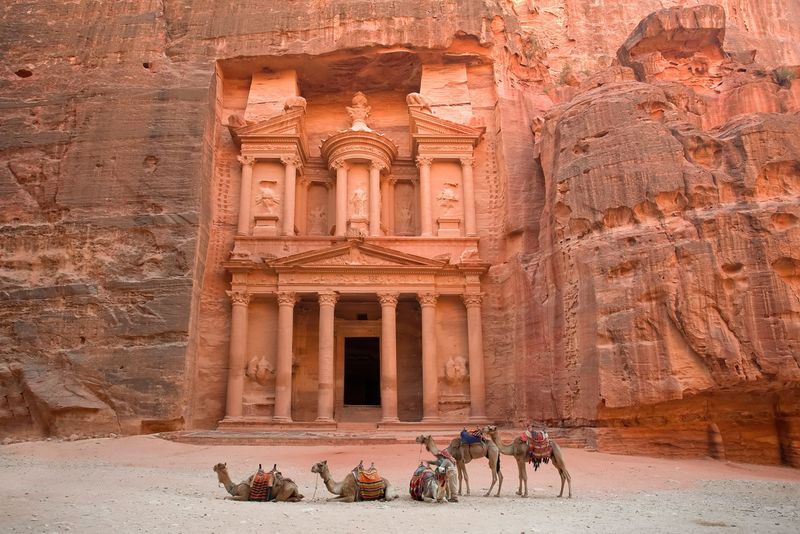
Hidden among narrow desert canyons, Petra reveals itself dramatically as you walk through the winding Siq pathway. The Treasury’s elaborate façade, carved directly into pink sandstone over 2,000 years ago, stands as a testament to the ingenuity of the ancient Nabataean civilization.
Beyond the famous Treasury lies an entire city with tombs, an amphitheater, and monasteries spread across a vast area. Candlelit night tours transform the archaeological wonder into a magical experience under starlit skies.
The site gained worldwide fame after appearing in ‘Indiana Jones and the Last Crusade,’ though locals have long treasured this architectural marvel carved into the very mountains of southern Jordan.
2. Machu Picchu, Peru: City in the Clouds
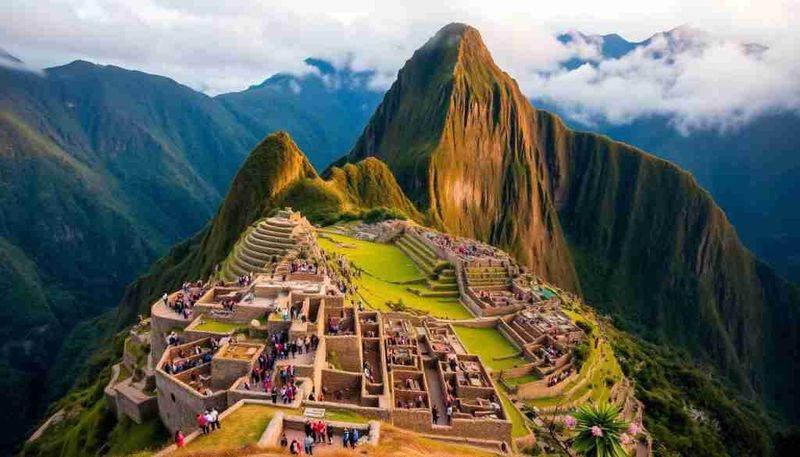
Perched high in the Andes Mountains at 7,970 feet above sea level, this 15th-century Incan citadel remained hidden from the outside world until 1911. Morning mist often swirls around the precisely cut stone structures, creating an ethereal atmosphere that feels suspended between earth and sky.
Agricultural terraces cascade down steep mountainsides, showcasing the Incas’ remarkable engineering skills. The site’s astronomical alignments reveal their sophisticated understanding of the heavens.
Most visitors arrive via train to Aguas Calientes, then bus up winding roads, though adventurous travelers can hike the legendary Inca Trail. The reward? Standing among ancient stones with condors soaring overhead and panoramic views of sacred peaks.
3. Santorini, Greece: The Mediterranean Jewel
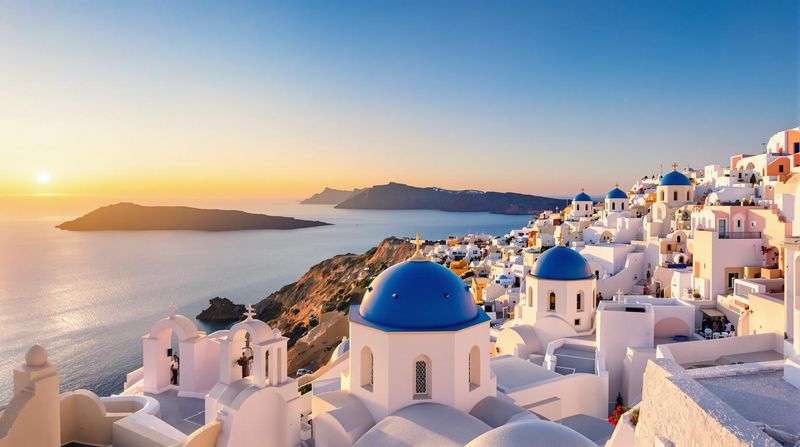
Formed by a massive volcanic eruption around 3,600 years ago, Santorini’s crescent-shaped caldera creates one of the world’s most spectacular natural harbors. Whitewashed buildings with distinctive blue domes cling to steep cliffs, creating a striking contrast against the deep azure of the Aegean Sea below.
Narrow cobblestone streets wind through villages like Oia and Fira, revealing hidden cafés and shops at every turn. Sunset here transforms the entire island into a canvas of gold, pink, and purple hues.
Beyond postcard-perfect views, the island offers black sand beaches, ancient ruins at Akrotiri (Greece’s answer to Pompeii), and exceptional wines grown in volcanic soil with unique minerality.
4. The Great Wall of China: Dragon’s Backbone
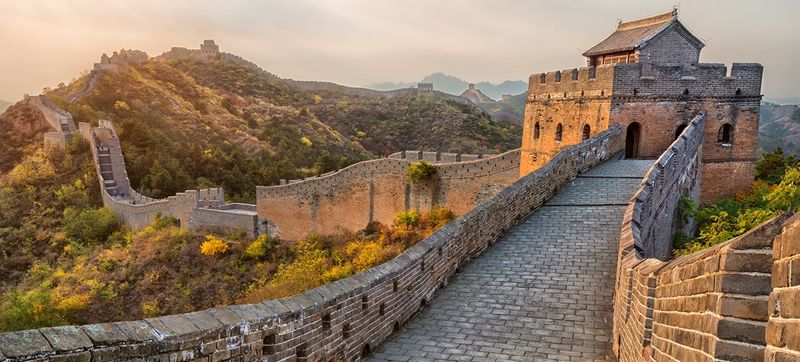
Snaking across mountains, deserts, and grasslands for over 13,000 miles, this monumental structure represents humanity’s most ambitious building project. Construction spanned multiple dynasties over 2,000 years, with each ruler adding sections to protect China’s northern borders.
The wall isn’t a single continuous structure but rather a network of fortifications featuring watchtowers, garrison stations, and beacon towers. Some sections near Beijing have been carefully restored, while remote segments remain wonderfully wild and untouched.
Walking along these ancient stones offers a physical connection to countless soldiers who once stood guard here. The Mutianyu and Jinshanling sections provide spectacular views with fewer crowds than the popular Badaling area.
5. Banff National Park, Canada: Alpine Paradise
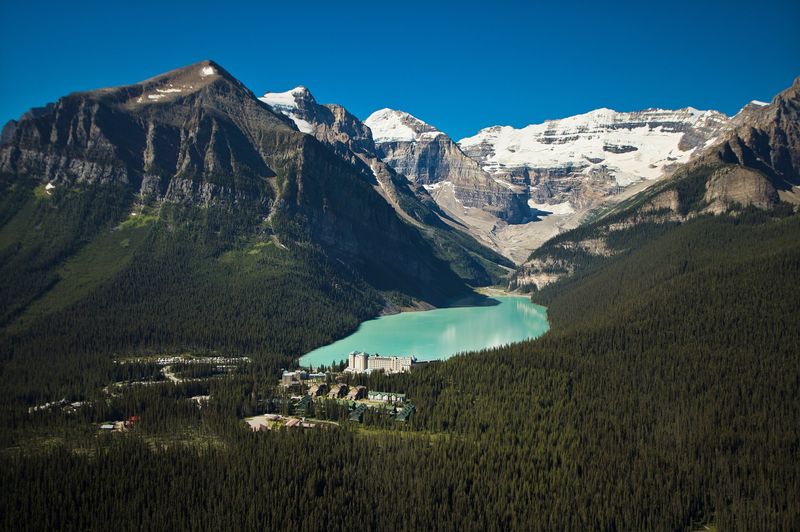
Established in 1885 as Canada’s first national park, Banff showcases the Rocky Mountains at their most majestic. Turquoise lakes reflect snow-capped peaks with such perfect clarity that photographs barely capture the surreal beauty.
Lake Louise and Moraine Lake draw visitors with their impossibly vibrant blue waters, colored by rock flour carried down from glaciers. Wildlife roams freely throughout the park – elk wander through meadows while grizzly bears forage on distant slopes.
The charming town of Banff offers hot springs, museums, and mountain culture beneath towering peaks. Winter transforms the landscape into a wonderland for skiing and snowshoeing, while summer brings hiking trails alive with wildflowers and adventure.
6. Taj Mahal, India: Monument to Eternal Love
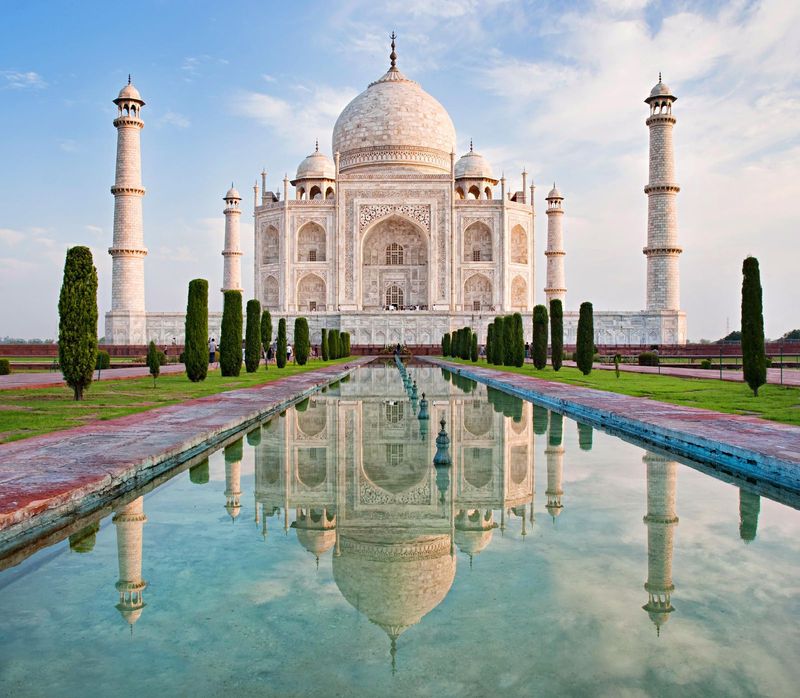
Rising from the banks of the Yamuna River like a dream in white marble, the Taj Mahal represents the pinnacle of Mughal architecture. Emperor Shah Jahan commissioned this mausoleum in 1632 to honor his beloved wife Mumtaz Mahal, who died giving birth to their 14th child.
Twenty-two thousand artisans labored for two decades, creating perfect symmetry in every detail. Semi-precious stones inlaid in intricate floral patterns adorn walls that change color throughout the day – pinkish in morning, brilliant white at noon, and golden at sunset.
Four identical facades ensure the building looks perfect from any angle, while reflecting pools double its beauty. Gardens designed with mathematical precision frame this testament to love that continues to move visitors centuries later.
7. Antelope Canyon, USA: Nature’s Masterpiece
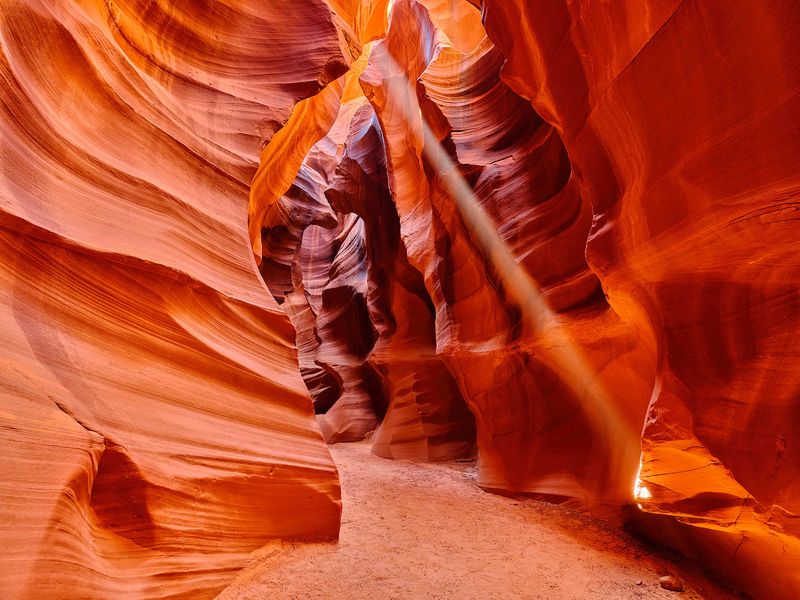
Carved by flash floods over millions of years, this slot canyon on Navajo land in Arizona reveals nature’s artistic side. Sunbeams pierce narrow openings above, creating light shafts that dance across curved sandstone walls in a mesmerizing display.
The canyon consists of two sections – Upper Antelope (more accessible) and Lower Antelope (requiring ladders to navigate). Both showcase swirling patterns where water has sculpted rock into flowing shapes resembling frozen waves.
Colors shift throughout the day from deep orange to purple as light angles change. Navajo guides share stories about the spiritual significance of this sacred place, adding cultural depth to its visual splendor. Photography enthusiasts particularly treasure midday visits when light beams are most dramatic.
8. Plitvice Lakes, Croatia: Cascading Wonderland
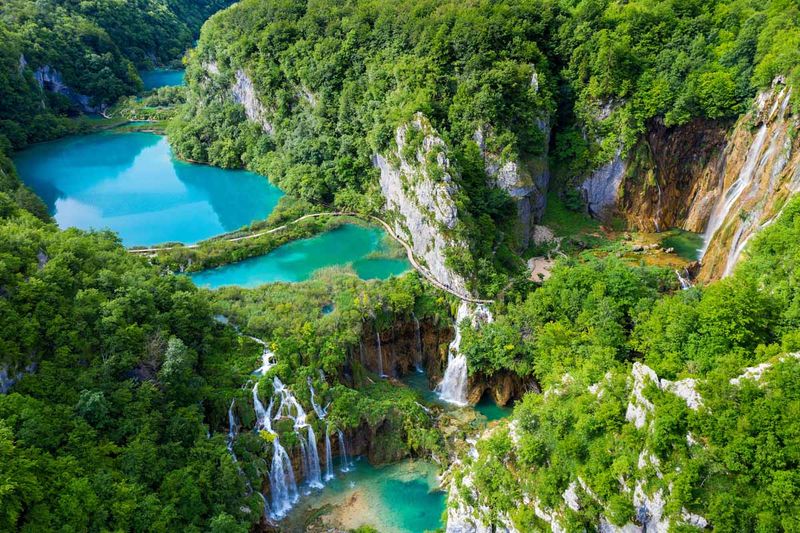
Sixteen terraced lakes connected by a series of waterfalls create nature’s perfect staircase in Croatia’s oldest national park. Mineral-rich waters continuously deposit travertine barriers, constantly reshaping this living landscape where new waterfalls form while others disappear.
Wooden boardwalks wind directly over crystal-clear waters teeming with fish, offering intimate views of the cascades. Colors range from azure to emerald depending on mineral content and sunlight, creating an artist’s palette of blues and greens.
Dense forests surrounding the lakes harbor deer, bears, wolves, and rare bird species. The park’s magic extends through all seasons – summer brings lush greenery, autumn paints the forests in gold, while winter transforms waterfalls into delicate ice sculptures.
9. Northern Lights, Arctic Circle: Sky’s Electric Dance
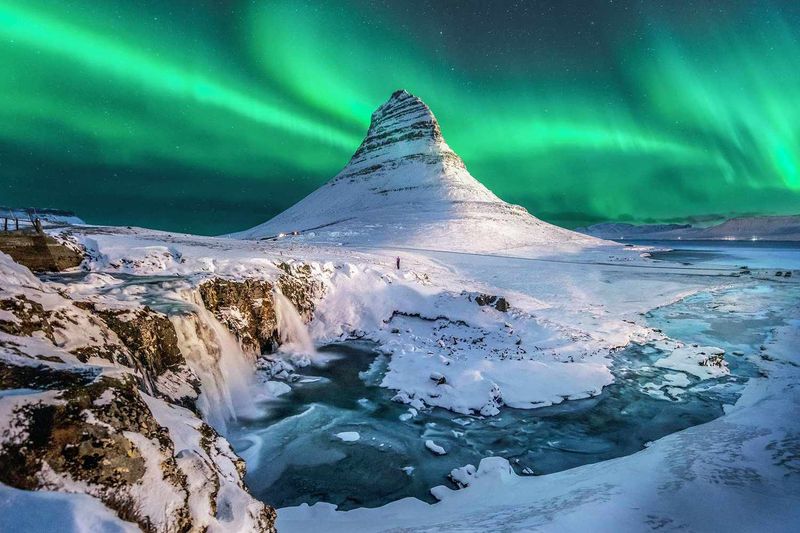
Ghostly green curtains ripple across star-filled skies, occasionally erupting in vibrant pinks and purples during this otherworldly light show. The aurora borealis occurs when solar particles collide with atmospheric gases, creating luminous displays that have inspired myths across northern cultures for millennia.
Prime viewing locations include northern Scandinavia, Iceland, Alaska, and Canada’s Yukon Territory. The phenomenon peaks during winter months when dark skies provide the perfect backdrop for nature’s light show.
No two displays are identical – some nights feature gentle glows while others showcase dramatic, dancing ribbons that fill the entire sky. Remote locations away from light pollution offer the most spectacular views, though the aurora remains unpredictable, making each sighting feel like a special gift.
10. Bora Bora, French Polynesia: Jewel of the Pacific

Rising dramatically from crystal-clear waters, Mount Otemanu’s jagged peak forms the emerald heart of this South Pacific paradise. Surrounding it lies a lagoon in impossible shades of blue – from pale turquoise near shore to deep sapphire in the deeper channels.
Overwater bungalows on stilts dot the lagoon, offering direct access to marine wonderlands below. Glass floor panels reveal colorful fish swimming beneath your feet, while private decks provide front-row seats to spectacular sunsets.
Coral gardens teem with tropical fish, making snorkeling here feel like swimming in a natural aquarium. Though small at just six miles long, this volcanic island packs extraordinary beauty into every vista, earning its reputation as the most beautiful island on Earth.
11. Angkor Wat, Cambodia: Lost City of Temples
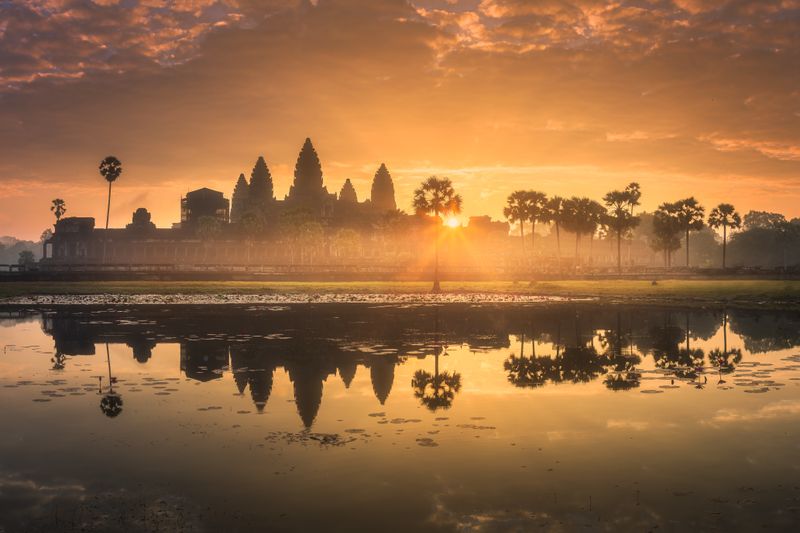
Rising from the jungle like a stone mountain, the world’s largest religious monument spreads across 400 acres of Cambodian landscape. Built in the early 12th century as a Hindu temple, later converted to Buddhism, its five lotus-shaped towers represent Mount Meru, the mythical home of the gods.
Intricate bas-reliefs stretch for nearly half a mile, depicting epic battles, heavenly dancers, and daily life from the Khmer Empire. These stone stories offer glimpses into a civilization that once dominated Southeast Asia.
Watching sunrise over the temple complex ranks among travel’s most magical moments, as first light illuminates ancient stones. Beyond the main temple, hundreds of additional structures lie scattered throughout the archaeological park, including the faces of Bayon and the tree-strangled ruins of Ta Prohm.
12. Cinque Terre, Italy: Rainbow Villages
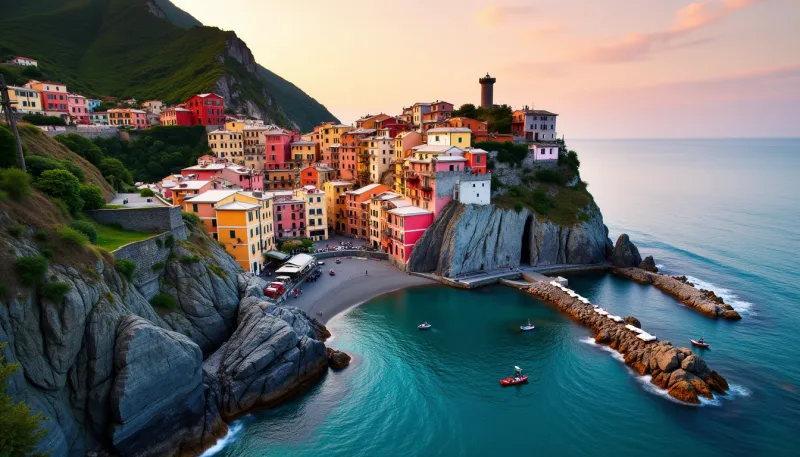
Five pastel-colored fishing villages cling precariously to steep cliffs along Italy’s rugged Ligurian coastline. Connected by ancient footpaths and a scenic railway carved through the mountains, each town offers its own distinct character while sharing a timeless Mediterranean charm.
Terraced vineyards and olive groves rise above clusters of pink, yellow, and orange buildings that tumble down to tiny harbors. Fishing boats bob in turquoise waters below while laundry flutters from balconies overhead.
Monterosso offers the region’s best beach, while Vernazza’s natural harbor creates a postcard-perfect scene. Corniglia perches high on a promontory, Manarola features wine terraces right to the sea, and tiny Riomaggiore showcases colorful tower houses. Together, they create a coastal paradise that seems almost too picturesque to be real.
13. Grand Canyon, USA: Earth’s Greatest Chasm

Carved by the Colorado River over millions of years, this colossal gorge stretches 277 miles long, up to 18 miles wide, and more than a mile deep. Layer upon layer of red, orange, and buff-colored rock reveals Earth’s geological history like pages in a stone book spanning nearly two billion years.
Sunrise and sunset transform the canyon walls into a living canvas of shifting colors and shadows. Hiking trails descend from rim to river, offering perspective-altering journeys through distinct ecological zones – equivalent to traveling from Canada to Mexico in just a few miles.
Native American tribes consider this landscape sacred, with the Havasupai still living within its boundaries near the stunning blue-green waterfalls of Havasu Creek. The canyon’s sheer scale humbles even the most seasoned travelers.
14. Great Barrier Reef, Australia: Living Ocean Treasure
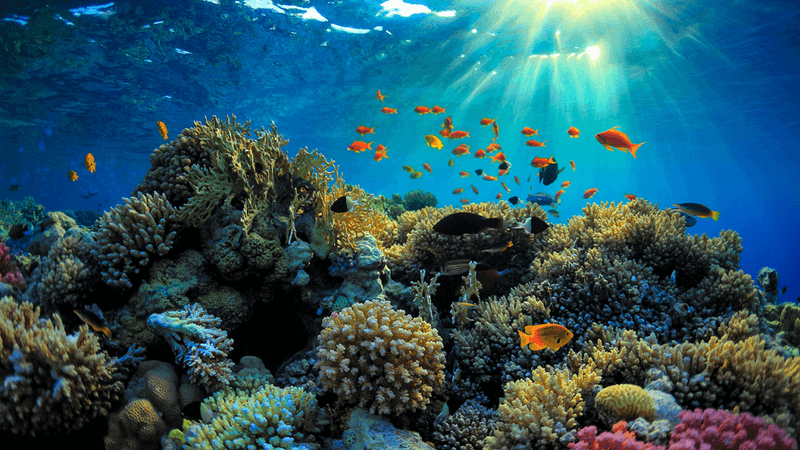
Stretching over 1,400 miles along Australia’s Queensland coast, this underwater metropolis comprises nearly 3,000 individual reef systems and hundreds of tropical islands. As the world’s largest coral reef ecosystem, it’s visible from space yet reveals its true magic up close through masks and snorkels.
More than 1,500 fish species dart among forests of coral in every imaginable color. Giant clams with electric blue mantles rest on the seafloor while graceful manta rays glide overhead.
The reef faces serious threats from climate change, with rising ocean temperatures causing coral bleaching events. Yet resilient sections continue to thrive, offering hope for this irreplaceable natural wonder that supports countless marine species and provides breeding grounds for humpback whales making annual migrations.
15. Mount Fuji, Japan: Sacred Symmetry
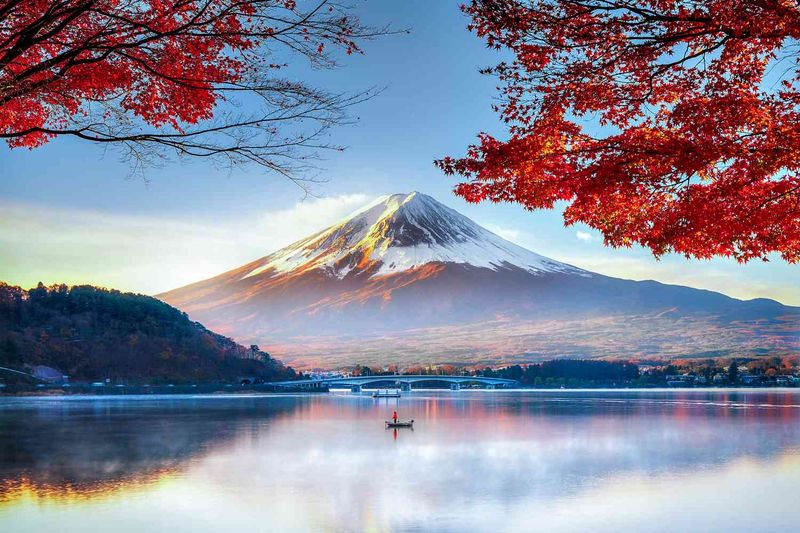
Rising in perfect symmetry from the Japanese landscape, this active volcano has inspired artists and pilgrims for centuries. Its nearly perfect conical shape, often capped with snow, creates an instantly recognizable silhouette that has become synonymous with Japan itself.
At 12,389 feet, Fuji-san (as it’s respectfully called in Japanese) dominates the horizon from Tokyo on clear days. Five lakes surround its base, offering mirror-like reflections of the mountain that photographers chase during calm mornings.
Though dormant since 1707, Fuji remains a sacred site in both Buddhist and Shinto traditions. Thousands of climbers ascend to its summit each summer, timing their hikes to witness sunrise (called ‘Goraiko’) from Japan’s highest peak. Cherry blossom season frames the mountain in pink during spring.
16. Iguazu Falls, Argentina/Brazil: Nature’s Power Unleashed
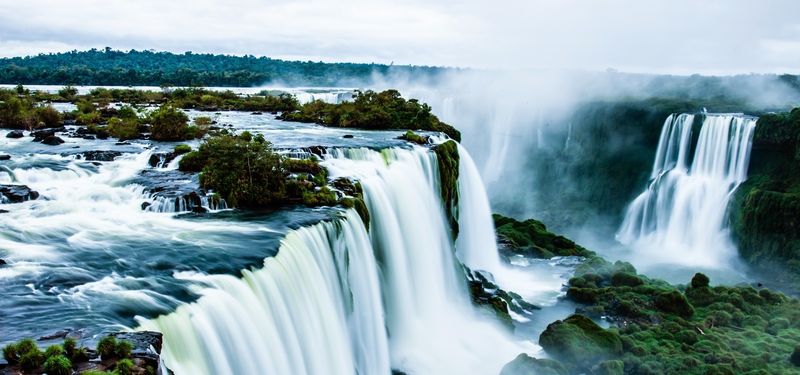
Stretching nearly two miles along the border between Argentina and Brazil, this thundering waterfall system makes Niagara look modest by comparison. Over 275 individual cascades drop up to 269 feet as the Iguazu River plunges over the Paraná Plateau in a spectacular display of raw natural power.
The Brazilian side offers panoramic views of the entire waterfall system. Meanwhile, Argentina’s network of walkways brings visitors thrillingly close to the water’s edge and directly above the largest section, Devil’s Throat, where water crashes into a U-shaped chasm with deafening force.
Subtropical rainforest surrounds the falls, home to toucans, coatis, and butterflies that add flashes of color to the perpetual rainbow created by water mist. The indigenous Guaraní name translates to ‘big water’ – perhaps the greatest understatement in travel.
17. Sahara Desert, North Africa: Ocean of Sand
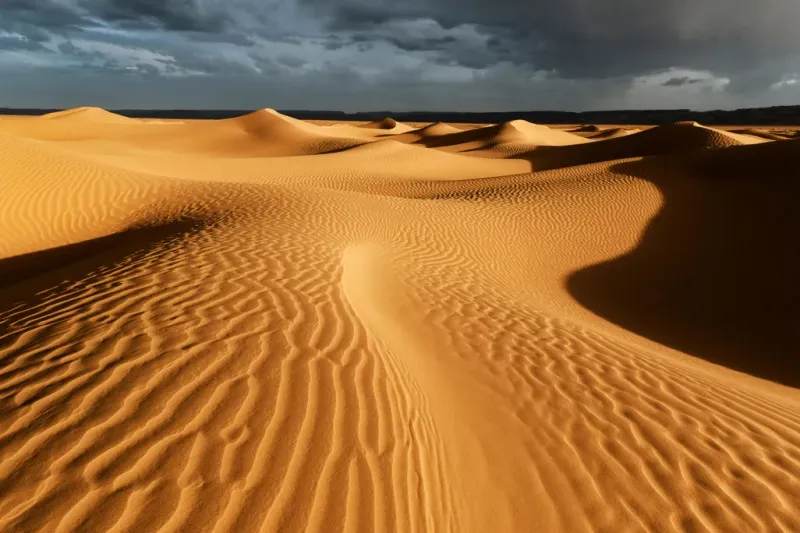
Covering an area nearly as large as the United States, the world’s largest hot desert creates landscapes of otherworldly beauty. Massive dunes rise hundreds of feet, their knife-edge ridges constantly reshaped by wind into perfect crescents and stars.
Sunrise paints the sand in shades of gold and amber, while night reveals a canopy of stars undimmed by light pollution. The temperature extremes are legendary – blazing days give way to surprisingly cold nights as heat escapes quickly through the dry air.
Oases with date palms provide green havens amid the arid expanse. Berber and Tuareg nomads have navigated these sands for millennia, developing deep knowledge of hidden water sources and desert survival. Morocco’s Erg Chebbi and Egypt’s Great Sand Sea offer accessible entry points to this vast wilderness.
18. Hallstatt, Austria: Alpine Fairytale
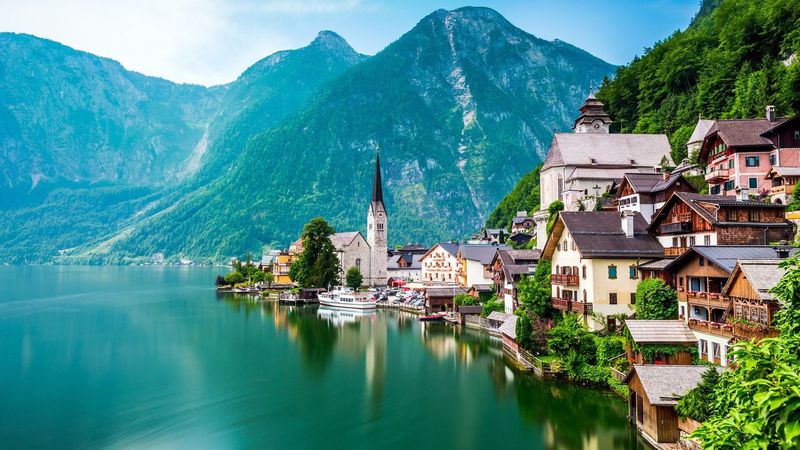
Wedged between soaring mountains and the glassy waters of Lake Hallstatt, this storybook village seems plucked from a fairytale. Pastel-colored houses with flower-adorned balconies stack against the mountainside, creating a scene so picturesque that China built an exact replica.
The village’s history spans 7,000 years, beginning with salt mining that brought early prosperity. The 16th-century Lutheran church with its slender spire dominates the waterfront, while the charnel house displays painted skulls in a unique local tradition.
Mist often shrouds the surrounding peaks, adding mystery to the alpine setting. Boat rides offer the classic postcard view that has made Hallstatt Instagram-famous, though winter transforms it into a quieter wonderland when snow blankets the rooftops and Christmas markets light up the square.
19. Easter Island, Chile: Mysterious Sentinels
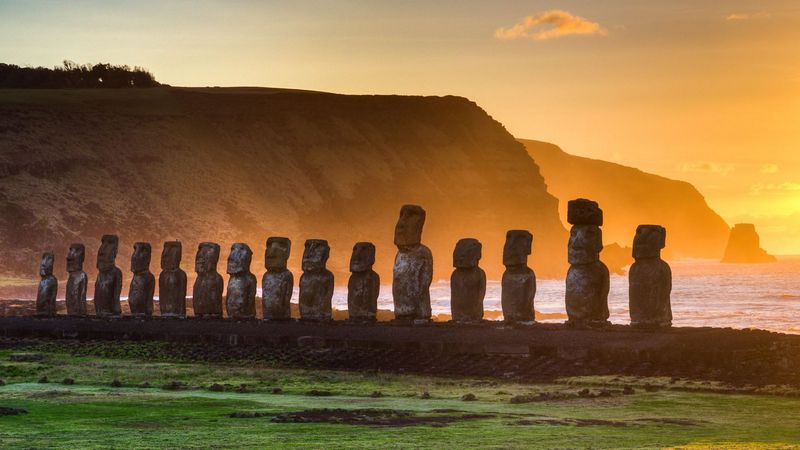
Nearly 900 monolithic stone figures stand watch over this remote Pacific island, some 2,300 miles from the Chilean mainland. Created between the 13th and 16th centuries, these moai statues represent ancestral chiefs whose spiritual power (‘mana’) protected the Rapa Nui people.
Carved from volcanic tuff and averaging 13 feet tall (though some reach 33 feet), these figures were transported miles from the quarry to coastal platforms. How exactly the islanders moved these massive statues remains debated by archaeologists.
Beyond the iconic statues, the island features volcanic craters, ceremonial villages, and petroglyph sites. The mysterious collapse of Rapa Nui civilization serves as a cautionary tale about resource depletion, though descendants of the original inhabitants continue cultural traditions on this enigmatic island at the world’s edge.
20. Amazon Rainforest, South America: Earth’s Vital Lungs
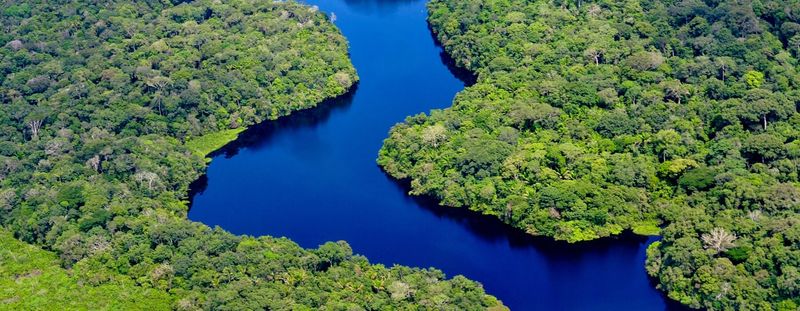
Spanning nine countries and covering over 2.1 million square miles, this vast ecosystem contains one-tenth of all known plant and animal species on Earth. The Amazon River and its tributaries form the world’s largest river system, with waters that change color from coffee-brown to midnight-black depending on sediment and tannins.
Layers of life fill every ecological niche – from forest floor to emergent canopy 200 feet above. Pink river dolphins surface in flooded forests while scarlet macaws flash through the canopy.
Indigenous communities have lived harmoniously within this forest for thousands of years, developing profound botanical knowledge. Despite alarming deforestation rates, vast areas remain pristine wilderness where jaguars still roam and uncontacted tribes maintain traditional ways of life, reminding us what’s at stake as this irreplaceable ecosystem faces mounting threats.
21. Serengeti, Tanzania: Wild Heart of Africa

Golden grasslands stretch to the horizon beneath vast African skies in this ecosystem that hosts the greatest concentration of plains game on Earth. The annual Great Migration sees over two million wildebeest, zebra, and gazelle follow seasonal rains in a continuous circuit through the Serengeti-Mara ecosystem.
Acacia trees dot the savanna, providing shade for lions lounging after successful hunts. Massive elephant herds move deliberately across the plains while cheetahs scan for prey from termite mounds.
Sunrise game drives reveal the landscape coming alive – giraffe silhouettes against the orange sky and hippos returning to water after night grazing. The name ‘Serengeti’ comes from the Maasai word meaning ‘endless plains,’ perfectly capturing this ecosystem where nature’s ancient rhythms continue largely unchanged, offering wildlife spectacles unmatched anywhere else.
22. Blue Lagoon, Iceland: Geothermal Paradise
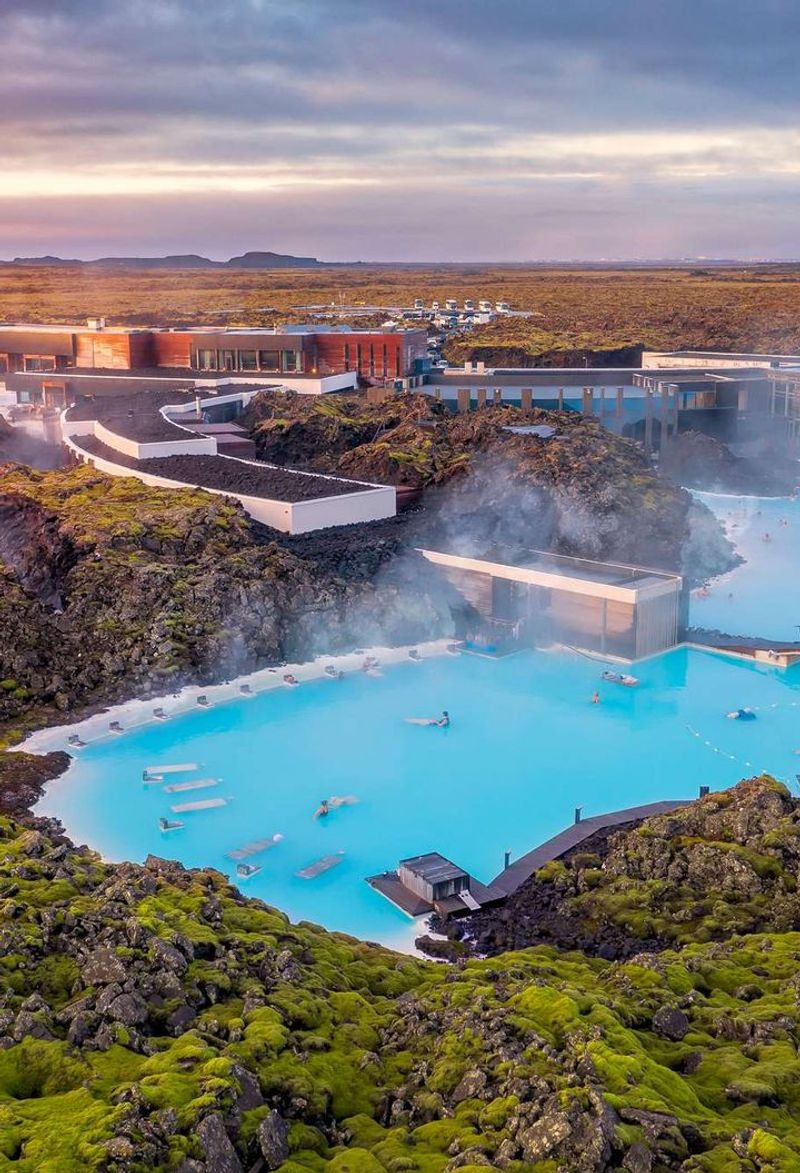
Milky blue waters steam against a backdrop of black lava fields in this geothermal spa formed by runoff from a nearby power plant. What began as an industrial accident has transformed into Iceland’s most famous attraction, where visitors float in mineral-rich waters naturally heated to a perfect 100°F.
The water’s distinctive color comes from silica, algae, and minerals that also form white mud visitors apply as natural face masks. Surrounded by moss-covered volcanic rock, the lagoon creates an otherworldly setting that feels particularly magical during winter when snow contrasts with steaming blue waters.
Though man-made, the lagoon harnesses Iceland’s powerful geothermal energy in sustainable ways. The country sits atop the Mid-Atlantic Ridge where tectonic plates meet, creating the perfect conditions for these healing waters that leave skin silky-smooth.
23. Ha Long Bay, Vietnam: Dragon’s Playground

Nearly 2,000 limestone islands rise dramatically from emerald waters in this breathtaking bay along Vietnam’s northern coast. According to local legend, these karst formations were created by dragons sent by the gods to protect Vietnam from invaders, spitting out jewels that formed the islands.
Traditional wooden junk boats with distinctive red sails navigate between towering pillars, offering overnight cruises through this UNESCO-protected seascape. Many islands feature hidden caves with spectacular stalactite and stalagmite formations illuminated by colorful lights.
Floating fishing villages dot the bay, where generations have lived entirely on the water in houses built atop floating platforms. Kayaking through the maze of islands reveals secret lagoons accessible only through low cave tunnels that open into sheltered sanctuaries of tranquil beauty.
24. Salar de Uyuni, Bolivia: Heaven’s Mirror
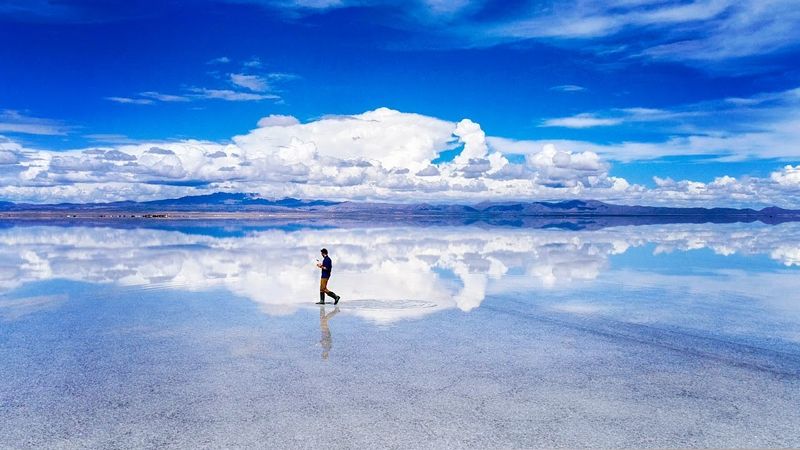
Stretching over 4,000 square miles of Bolivian highlands, the world’s largest salt flat creates landscapes that bend reality. During the rainy season, a thin layer of water transforms the surface into the planet’s largest mirror, perfectly reflecting the sky and creating the illusion that you’re walking among clouds.
Formed from prehistoric lakes that evaporated long ago, the salt crust extends to the horizon in a blindingly white expanse. Hexagonal patterns created by salt crystallization cover the surface like nature’s perfect tiling.
Scattered across this alien landscape are cacti-covered islands that rise from the salt like mirages. At night, the salt flat becomes an astronomical observatory where stars reflect below your feet. Daytime brings opportunities for perspective-bending photos that play with the lack of visual reference points.
25. Mont Saint-Michel, France: Fortress of Faith
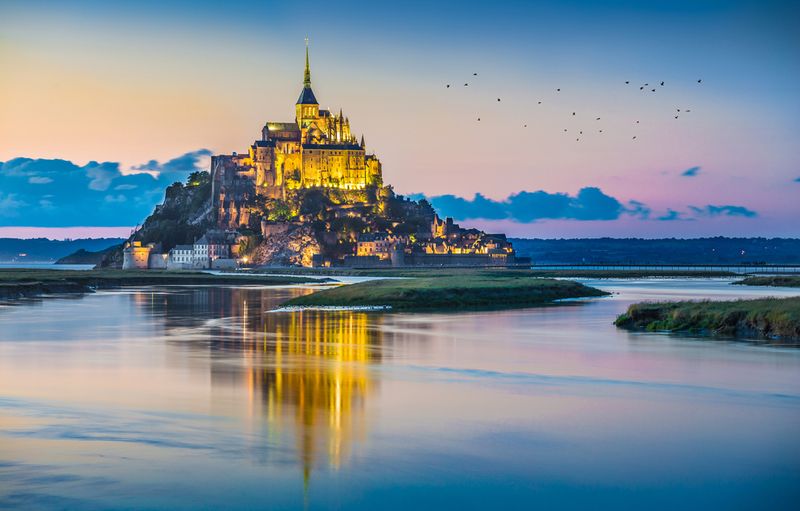
Rising from tidal flats like a mirage, this medieval abbey crowns a rocky island off France’s Normandy coast. Founded in the 8th century after the Archangel Michael supposedly appeared to the local bishop, the site evolved from humble chapel to fortified monastery over centuries.
Narrow winding streets climb through the village below, passing ancient houses and shops before reaching the abbey church perched 250 feet above sea level. Massive tides – among Europe’s highest – transform the surroundings twice daily, alternately isolating and connecting the mount to mainland.
Gothic spires pierce the sky while flying buttresses support the abbey’s ‘Marvel’ – an extraordinary set of monastic buildings demonstrating medieval architectural genius. Though modern causeway access has altered the island’s relationship with the sea, Mont Saint-Michel remains one of France’s most magical and mystical landmarks.
26. Victoria Falls, Zambia/Zimbabwe: The Smoke That Thunders
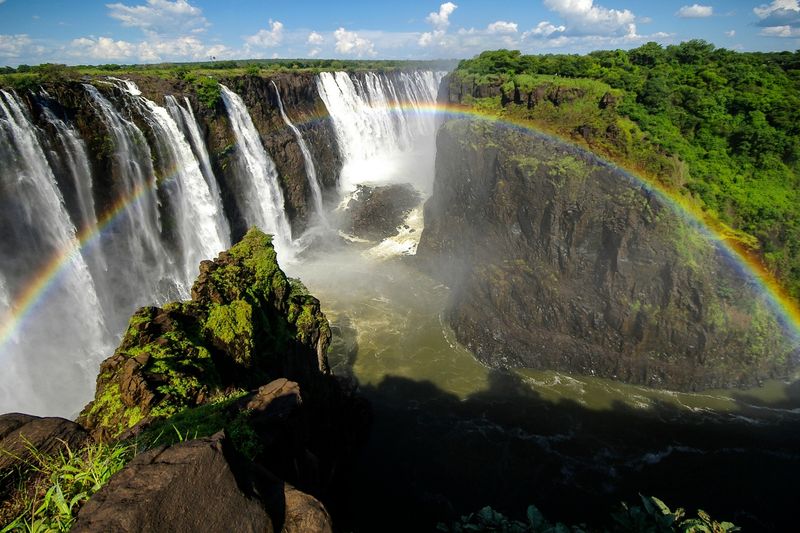
A wall of water nearly a mile wide plunges 355 feet into a narrow gorge, creating the world’s largest sheet of falling water. The local name, ‘Mosi-oa-Tunya’ (The Smoke That Thunders), perfectly describes the experience – spray rises over 1,000 feet, visible from miles away, while the roar of water drowns all other sounds.
During peak flow after rainy season, over 500 million liters cascade over the edge every minute. The falls create a unique rainforest microclimate on the otherwise arid plateau, supporting lush vegetation and rainbow-filled mist.
Knife Edge Bridge brings visitors terrifyingly close to the churning abyss, guaranteeing a thorough soaking. For the ultimate adrenaline experience, brave swimmers visit Devil’s Pool during dry season – a natural infinity pool right at the edge of the falls.
27. The Dolomites, Italy: Nature’s Cathedral

Pale limestone peaks thrust dramatically skyward in northern Italy’s most distinctive mountain range. Unlike the rounded profiles of most Alpine mountains, the Dolomites feature vertical walls, towering spires, and horizontal plateaus that create a jagged, otherworldly skyline often bathed in alpenglow – a pinkish light at sunset.
Lush green valleys dotted with timber chalets and onion-domed churches contrast with the stark rock faces above. Mountain huts (rifugios) offer hikers warm meals and beds along an extensive trail network through this UNESCO World Heritage landscape.
The region blends Italian and Austrian influences in its unique Ladin culture and cuisine. Winter transforms the area into a skier’s paradise, while summer brings wildflower meadows alive with color beneath peaks that seem to touch the sky.
28. Zhangjiajie, China: Avatar Mountains
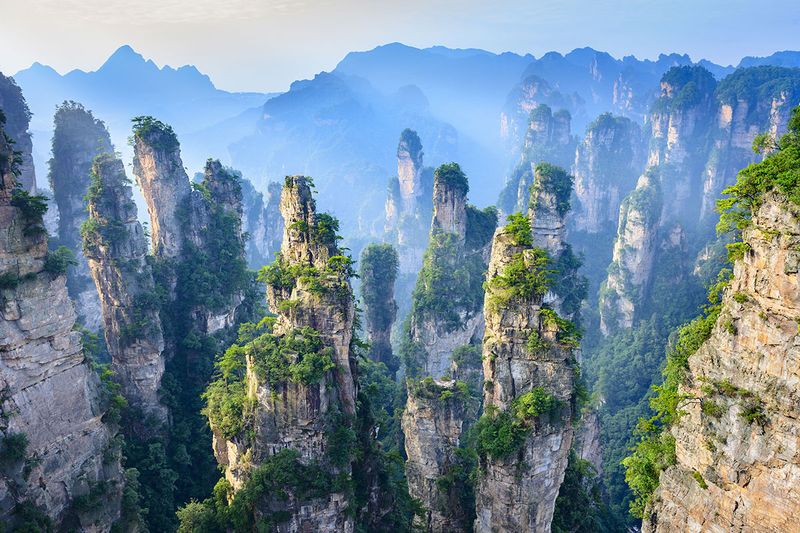
Thousands of sandstone pillars rise like petrified giants from misty forests in this landscape that inspired the floating mountains of Pandora in James Cameron’s ‘Avatar.’ Some towers soar over 3,500 feet from the valley floor, creating one of Earth’s most surreal vistas.
Glass walkways and the world’s tallest outdoor elevator provide heart-stopping perspectives of the stone forest. Winding trails lead through bamboo groves and streams below, where red-backed macaques scramble through the undergrowth.
Morning fog often shrouds the lower portions of the pillars, creating the illusion that these massive stone columns float unsupported in the clouds. The area’s original name translates to ‘Son of Heaven Mountain,’ though its otherworldly appearance has earned newer nicknames like ‘Hallelujah Mountains’ after its Hollywood fame.
29. Pamukkale, Turkey: Cotton Castle
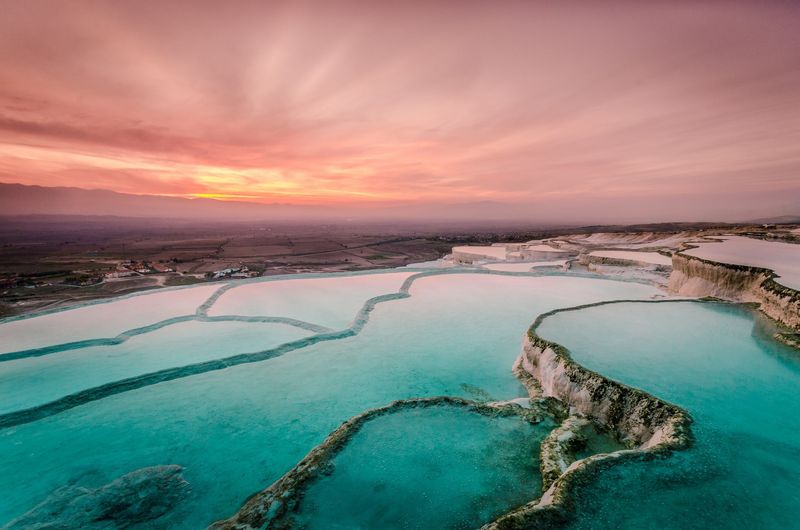
Brilliant white terraces cascade down a hillside like a frozen waterfall in this geological wonder whose name translates to ‘cotton castle.’ Formed by calcium-rich thermal waters flowing down the mountainside, these natural infinity pools create a surreal landscape that has attracted visitors since Roman times.
Turquoise waters fill the terraced basins, their mineral content giving them therapeutic properties. Visitors can wade barefoot through the shallow pools, feeling the smooth travertine beneath their feet while gazing across the countryside below.
The ancient city of Hierapolis sits atop the formation, with remarkably preserved theater and necropolis. Cleopatra’s Pool allows swimming among submerged ancient columns in the same thermal waters that created the white terraces, connecting modern visitors to a tradition of wellness spanning thousands of years.

